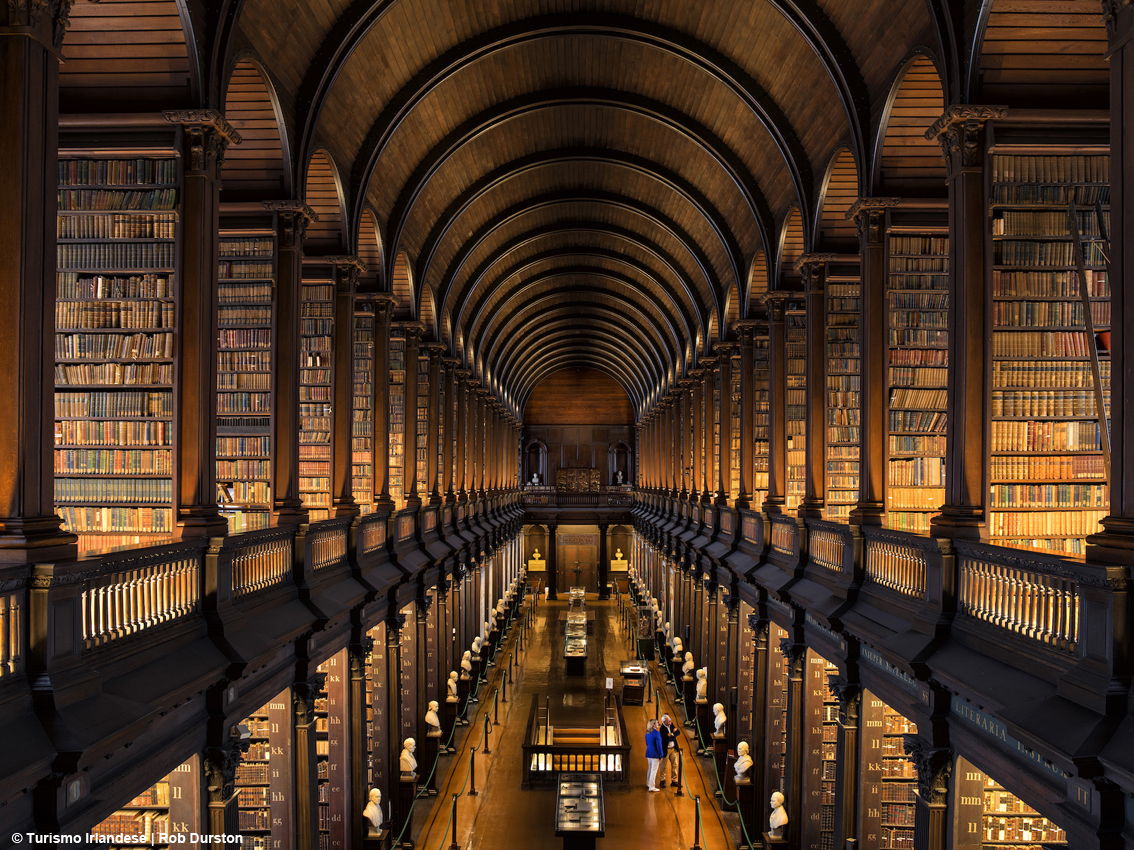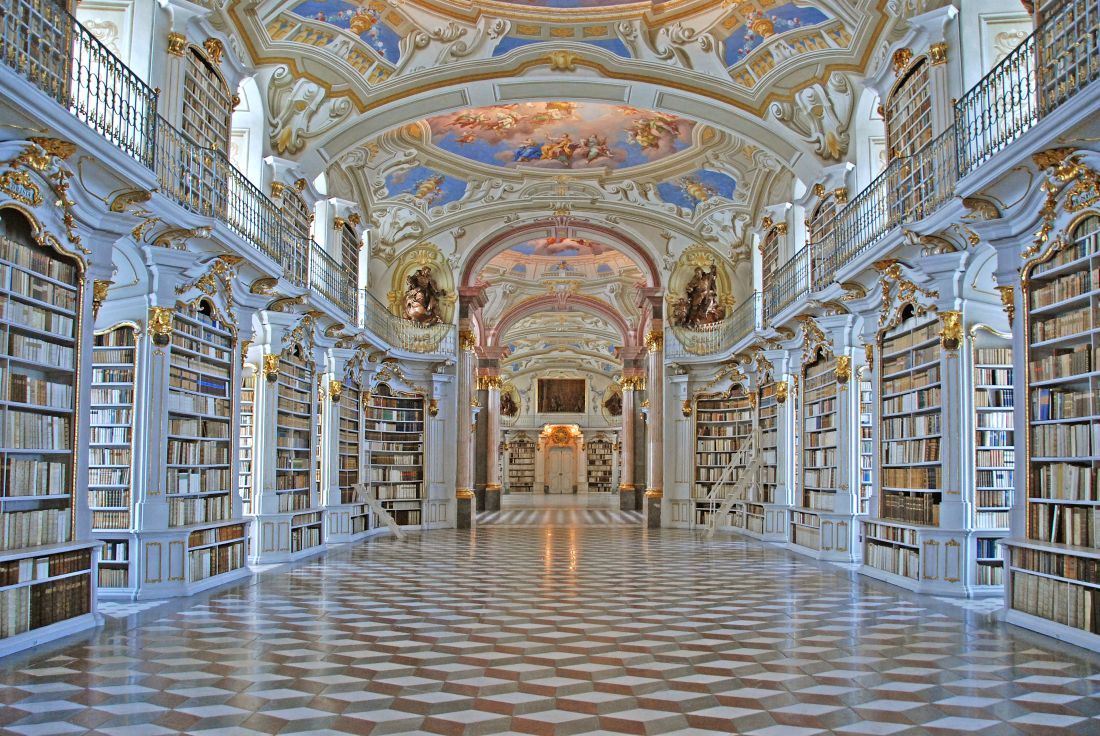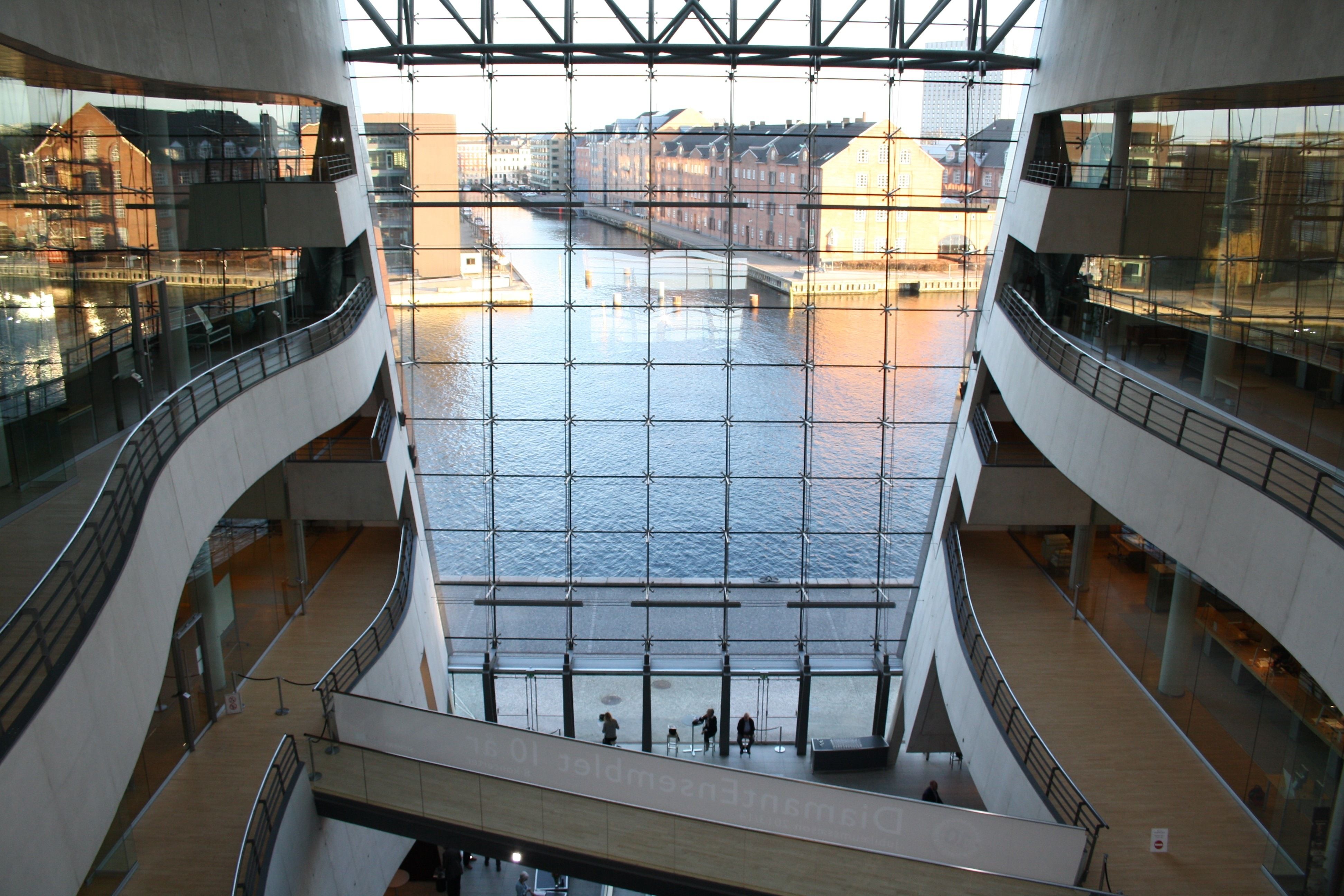Endless rows of shelves that rise from floor to ceiling, thousands of books, custodians of universes to be discovered, silence. There is something almost mystical in the most beautiful libraries in the world: places to immerse yourself, study, reflect, transported by the beauty of architecture, art and culture that merge. Leaving the world out for a few hours.
From the richest to the most austere, from the ancient to the contemporary, the "book houses" transmit emotions, so much so that in the 2000s libraries began to be a favorite subject of contemporary interior photography - think for example of those immortalized by the lens of artists who use photography, such as Candida Hofer. Furnishing the house with images that portray these extraordinary places is still a very strong trend in the interior.
A succession of rows of brass table lamps and colored glass in pastel shades: among the most fascinating university libraries stands the Fustel de Coulanges reading room, one of the main spaces of the Sorbonne library in Paris, in the 5th arrondissement; here the elegant eighteenth-century frescoes (the library was completed in 1770) culminate at the back of the room with an entirely painted wall: an extremely refined frame for the shelves and large wooden study tables, austere elements softened by the sweetness of the sinuous trend of the ceiling, decorated with gilding and shades that recall the colors of the sky.

Moving north, we cannot fail to mention the library of Trinity College in Dublin, founded in 1592 by Queen Elizabeth I. Completed in 1732, this Georgian-style architecture with surprisingly large windows that filter natural light on the oak shelves inside, contains a 65 meter long reading room with very high vaults, and an enormous variety of books, of which the oldest work is one of the last copies of the Proclamation of the Republic of Ireland, dating back to 1916. In short, an archetype of the “movie” library - it was in fact the set of numerous films - which evokes the magic of Irish atmospheres. The hall was expanded on two levels in 1850 to house a larger collection of books by architects Benjamin Woodward and Sir Thomas Deane.

From Ireland to the Alps, here we are in Austria, discovering a unique, fairytale library: we are in the mountains of Styria, the cradle of the Library of the Benedictine monastery of Admont. Built in the mid-18th century and finished towards the end of the century by Empress Maria Theresa of Austria, this impressive library boasts cathedral-like dimensions, measuring 79 meters in length by 14 meters in width. Furnished with busts and sculptures, the interior is a pearl of the Rococo, articulated on seven domes frescoed in trompe l'oeil that allow natural light to filter through to ensure pious reading in the most favorable conditions. The books themselves increase the sensation of brightness: those of the original collection have been specially bound in white to enhance the decorative scheme. Here are contained about 70,000 volumes, while the Abbey itself has a total of almost 200,000.

Which, on the other hand, are the most grandiose libraries conceived by contemporary architecture? Known as the black diamond, the Royal Library of Copenhagen is a very modern and elegant building located in the port area of the city. Designed in 1999 to expand and incorporate the works of the original building (from 1906), with nearly 5 million books, it is one of the largest libraries in the world, and is the largest in the Nordic countries. Synthesis of a perfect harmony between antithetical interior and exterior, the library exhibits an envelope with an essential style in black marble and glass, while inside it much more sinuous lines prevail, with wave-shaped balconies that evoke organic design.

Libraries are important witnesses to the history of architecture, sources of inspiration for the design of innovative and functional solutions designed for this type of space. This is why some libraries have changed shape over the decades: discovering one of the most interesting libraries for the mix between new and old we catapult into the heart of Rome: the huge "Mask" of a sixteenth-century building welcomes visitors to the Hertziana Library in via Gregoriana, one of the most renowned research institutes in the world for the history of Italian art, which also houses a photo library. The interior, which has recently undergone architectural renovations, is spread over five levels organized around a vertical light well, a solution that makes the space extremely bright, also thanks to structural features such as white painted bricks. the marble slabs of the floors, the metal frames, the glass.






.png)





